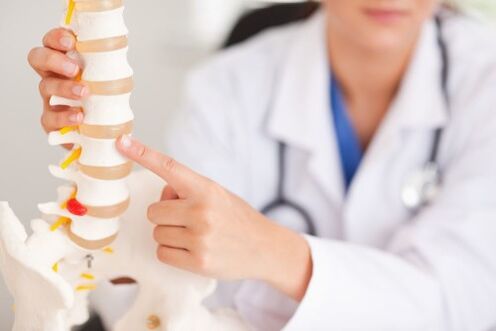
Each person at least once in his life faced a problem when his back hurts in the lower back.Such a symptom often appears with a prolonged seat in an uncomfortable position.Pain is safe for health and passes after a good rest.
Treatment can be prescribed only after complete diagnosis and determination of the cause and nature of the disease.No action can be done independently without examining a doctor.
A variety of reasons
The most common causes that lead to pain: osteochondrosis, scoliosis, hernia of the intervertebral discs.Tumors and infectious tissue lesions are much less common.
Depending on the disease, the pain is manifested in different ways.If the cause of the pain is renal colic or stomach ulcer, then the sensations are constant regardless of the nature of the activity (a person is located lying or busy with active activity).
If there is osteochondrosis of the thoracic region, then the pain gives to the heart, then the patient mistakenly believes that he has angina pectoris.
If the lower back hurts in a lying position
When the pain appears and the person does not know what to do with it, he prefers to lie down, hoping that the discomfort will pass.But if the pain intensifies in the position of lying down, then most likely there is a disease of the musculoskeletal system, which is called the illness of Bekhterev.
The disease affects young men, changes occur in the vertebrae and they are growing up, the flexibility of the spine is reduced.
Due to the fact that the spine cannot take a natural position, a person in a lying position feels pain.
Bekhterev’s disease is inherited, the impetus for development is given by chronic infectious diseases.The pain intensifies if you lead a sedentary lifestyle.
The first sign is the feeling of stiffness in the spine, as well as if lying down the lower back is enhanced.Early diagnosis allows you to completely cure the disease.
Primary pain syndrome
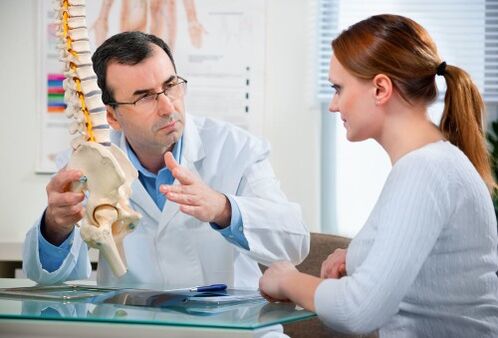
Doctors share primary and secondary pain syndromes when it comes to back pain and lower back.
Primary lumbar pain syndrome contains muscle-skeletal changes that are morphofunctional.
This includes the most common causes, which is why pain arises:
- osteochondrosis (lesion of bone and cartilage, intervertebral disc);
- Spondyloprtrosis (damage to the intervertebral joints that affect the mobility of the spine).
Secondary pain syndrome
Secondary syndrome includes a greater variety of diseases, due to which the back hurts in the lower back:
- Scoliosis (curvature of the spine);
- reflected pain;
- osteoporosis and osteomulation (lesion of the costeen tissue);
- Bekhterev disease (inflammation of a non -infectious nature);
- rheumatoid arthritis;
- insulated tumor or formed metastases;
- tuberculosis, epidural abscess, brucellosis (infectious diseases);
- a stroke condition that leads to a violation of cerebrospinal circulation;
- gastrointestinal diseases (in particular, appendicitis or intestinal disease);
- diseases in the pelvic area (renal colic, sexually transmitted diseases);
- Fracture of the dorsal vertebrae (the most dangerous and serious reason).
Acute pain
The lower back pain is also divided into acute and chronic.Each of them shows for certain reasons.
Nonal but painful manifestation of acute pain is muscle stretching.It occurs due to the formation of cramps in long muscles.
Most often, athletes and people of working specialties suffer from a problem.The pain is localized in the lower back, but it is clearly felt in other parts of the body, the human mobility is limited, lying down lying down.
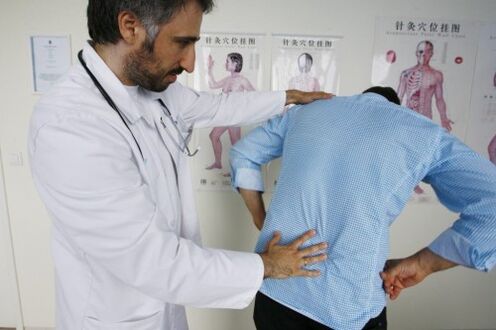
Knocking spine also leads to acute pain.The most dangerous injury is the spinal fracture.
A fracture can be caused by a fall, and it can occur completely, for example, if a person suffers from Pedget's disease, osteoporosis, hyperparathyroidism, or he has a tumor.
The displacements of the intervertebral discs in the lumbar region are also leaded to pain.In this case, human mobility will be very limited.
The pain itself is caused by compression of the nerve roots.Additional symptoms:
- impaired sensitivity;
- decrease or complete absence of Achilles and knee reflexes;
- Radio pain.
The displacement of the vertebrae can lead to the pathology of the nearby, which were healthy until the last.Violations of the lower vertebrae lead to diseases of the bladder and intestines.
Another reason why acute pain occurs is facile syndrome.The intervertebral disc is not affected at the same time, only the compression of the spine occurs, which comes out of the spinal canal.The intervertebral hole is narrowed due to the narrowing of the intervertebral hole.
A serious disease as an epidural abscess can lead to pain.What in this case to do?
With the disease cannot be delayed, as it can lead to tragic consequences.It is necessary to immediately take all measures to eliminate compression of the spinal cord, sometimes surgical intervention is required.
In the area, starting from the lower back, ending with knees, can give pain caused by diseases of the hip joint.
Chronic pain
If the back is sick in the lower back and the pain is constantly present, it is aching or pulling, then this indicates other diseases than in acute pain.
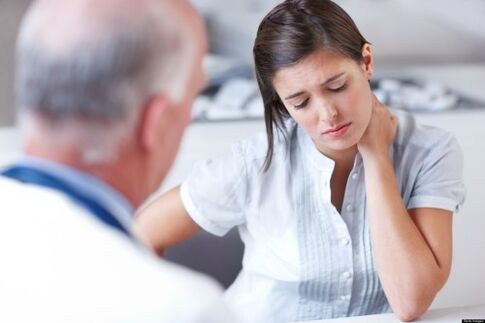
The first reason is deforming spondylosis.The vertebrae of the lumbar region undergoes dystrophic changes, the ligaments weaken, bone growth begins.
As a result, bone outgrowths begin to exert pressure on the nerve roots and aching pain occurs.Symptoms can be added to numbness and weakness in the legs.
Chronic lower back pain can be caused by cancer or impaired metabolism processes.
In this case, you need to do antitumor therapy, change the regimen of the day and nutrition to eliminate the root cause, everything else will be ineffective.
Another reason is osteomyelitis when the infection penetrates the bone and causes inflammatory processes.
Disease leading to lower back pain
Other diseases that cause pain in the lumbar region
- facetal arthropathy;
- stenosis of the spinal canal;
- disk hernia;
- myogenic pain;
- Rupture of a fibrous ring.
In women, pain can be provoked by pelvic diseases, such as endometriosis, uterine carcinoma and ovaries.In men - prostatitis or prostate carcinoma.
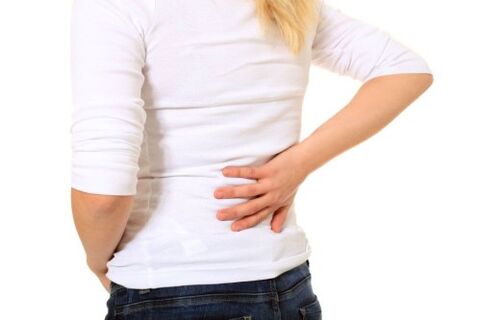
Path of the buds, a tumor in the stomach, duodenum can also give to the lower back.Pain occurs with ulcerative colitis, tumors of the colon, diverticulitis.
If the pain applies not only to the lumbar, but also to the thoracic region, then it is important to exclude the probability of aorta stratification.
For harmful causes, there may be physiological changes, for example, a postpartum period or a sharp set of mass, the influence of epidural anesthesia.
Treatment of such pain is not carried out, the patient can not do anything, the pain will pass after a certain time.
Treatment of the lumbar region
Before starting treatment, you need to correctly make a diagnosis.First, the doctor conducts a clinical examination of the patient, then relies on the results of ultrasound and MRI examinations.
Based on the diagnosis, a therapeutic program is already selected, combining various methods.
First of all, the treatment is aimed at eliminating the pain syndrome in order to return the patient a comfortable life.After all, the complete cure of the disease (if possible) can last years.
If a bruise became the cause of the disease, then a traumatologist will be treated.Depending on the cause of the pain that the therapist/family doctor should reveal, the further history of the disease can lead an orthopedist, nephrologist, urologist, proctologist, gynecologist, cardiologist, gastroenterologist, pulmonologist, infectious media.
Previously, the treatment of pain in the lower back was carried out exclusively with antibiotics.Now there are so many methods for treatment that only an experienced doctor will help to choose the right one.
To facilitate the condition of the patient, it is recommended to change the mattress to orthopedic.The pain will eliminate painkillers warming ointments and gels, which additionally contain anti -inflammatory components.
It is also advisable to use non -steroidal anti -inflammatory drugs.Muscle cramps will be removed by muscle relaxants, swelling of the nervous spine will eliminate diuretic and vascular products.
When the patient can return to a normal lifestyle, treatment continues with physiotherapy, massage and therapeutic exercises.
Treatment is carried out using the following non -drug methods:
- vacuum therapy;
- acupuncture;
- laser therapy;
- manual therapy;
- dry traction;
- pharmacopuncture;
- electrical stimulation;
- magnetopuncture.
Such treatment provides rapid removal of pain, and also eliminates the cause itself, thus ensures a long -term result.



































